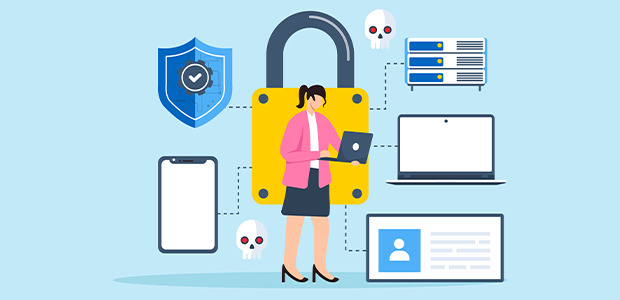
The next generation of cyber threats for 2025
In 2024, cybersecurity breaches and attacks were a significant issue for UK businesses, with approximately 50% of organisations reporting incidents. Government data reveals that 58% of small businesses, 70% of medium-sized businesses, and 74% of large businesses experienced cyber threats.
The cyber security landscape is set to become even more treacherous in 2025. Attackers are increasingly leveraging AI to enhance their methods, using automation to explore new weaknesses, and crafting personalised phishing campaigns to exploit vulnerabilities more effectively.
Ransomware-as-a-Service (RaaS) has also lowered the barrier for entry, allowing even inexperienced attackers to execute sophisticated attacks.
Additionally, the growing reliance on cloud technology expands the potential entry points for malicious actors, while a blend of cyber and physical threats poses new risks to critical supply chains. Alarmingly, geopolitical tensions are also escalating state-sponsored hacking efforts, amplifying the scale and complexity of attacks.
David Ritchie, Director and Co-Founder of bespoke software development company Propel Tech, comments: "Cybercriminals are evolving at an alarming pace, employing tools like AI and ransomware-as-a-service to outmanoeuvre even the most robust defences. For businesses, cyber security insurance is no longer optional – it’s essential. But securing a policy requires more than a premium payment; businesses must demonstrate a solid security infrastructure, which can be a challenge in itself."
While cyber security insurance offers financial protection against attacks, insurers are increasingly stringent about policy requirements. Propel Tech advises businesses to take concrete steps to qualify, such as achieving Cyber Essentials Plus certification to establish baseline security standards.
Strengthening IT infrastructure is another critical measure, including securing servers, implementing multi-factor authentication, and ensuring regular software patching. Monitoring and response tools are also essential to identify and neutralise threats in real time.
Cyber insurance doesn’t just protect a business’s finances; it pushes them to adopt stronger security practices, ultimately building trust with clients and partners. Steps companies can take to strengthen their defences against a new breed of cyber security threats for 2025 include:
AI-enhanced attacks
AI-driven email security systems can analyse behavioural patterns and detect phishing attempts with high accuracy. Regular employee training is also essential to empower staff to recognise these tailored threats. Additionally, organisations should implement Zero Trust Architecture (ZTA), which ensures no device or user is trusted by default, requiring continuous verification for access to sensitive systems.
Ransomware-as-a-service
Businesses should prioritise maintaining secure and frequent backups of critical data, including offline copies, to mitigate the impact of ransomware attacks. Advanced endpoint detection and response (EDR) solutions can identify and neutralise unusual behaviours linked to ransomware activity. Furthermore, adopting a principle of least privilege by limiting user access to sensitive data and systems can significantly reduce the risk of damage caused by compromised credentials.
Cloud vulnerabilities
Regular audits of cloud setups can help businesses adhere to security best practices, such as ensuring storage buckets are not publicly accessible. Encrypting data in transit and at rest offers additional protection in the event of a breach. Given that APIs are a common attack vector in cloud environments, their security must be a priority, with regular monitoring and implementation of stringent access controls.
Blended threats
Physical and cyber security teams should collaborate to identify and address overlapping vulnerabilities, especially in operational technology (OT) environments. Internet of Things (IoT) devices, often integral to supply chains, require robust security protocols, including firmware updates and network segmentation. Strengthening supply chain security also involves conducting thorough assessments of vendors and ensuring that third parties adhere to strict cybersecurity standards.
Geopolitical drivers
Threat intelligence sharing through industry-specific groups, such as Information Sharing and Analysis Centres (ISACs), enables organisations to stay ahead of emerging threats. Developing and regularly updating incident response plans ensures that businesses can swiftly respond to cyber or geopolitical crises. Resilience testing, including penetration testing and simulated attacks, can help identify and address potential weaknesses before they are exploited.
General best practices
Regular software and hardware updates ensure that vulnerabilities are minimised. Furthermore, aligning with recognised cybersecurity frameworks and regulations, such as GDPR or ISO 27001, helps establish comprehensive defences while fostering trust with clients and partners.
For more startup news, check out the other articles on the website, and subscribe to the magazine for free. Listen to The Cereal Entrepreneur podcast for more interviews with entrepreneurs and big-hitters in the startup ecosystem.

